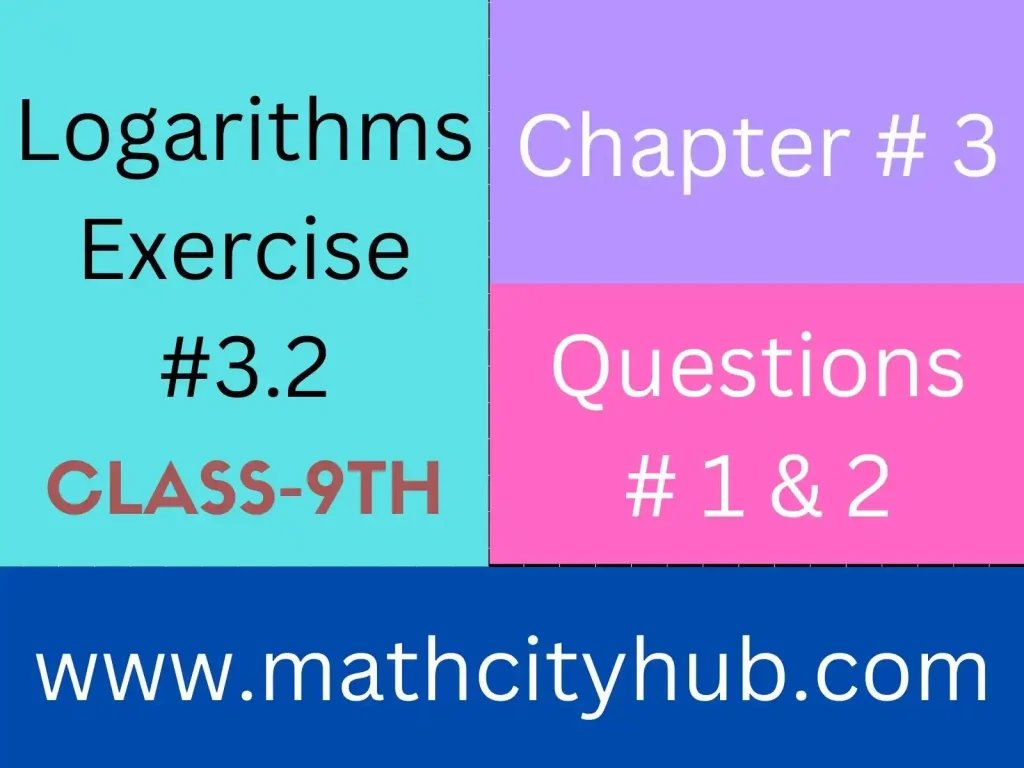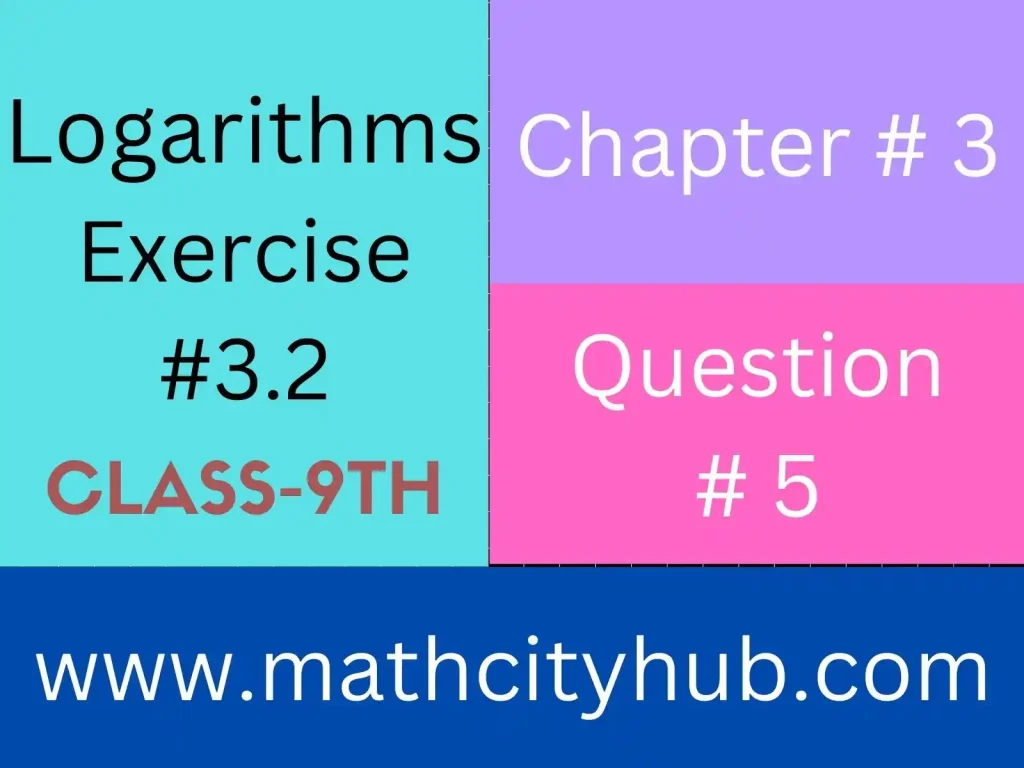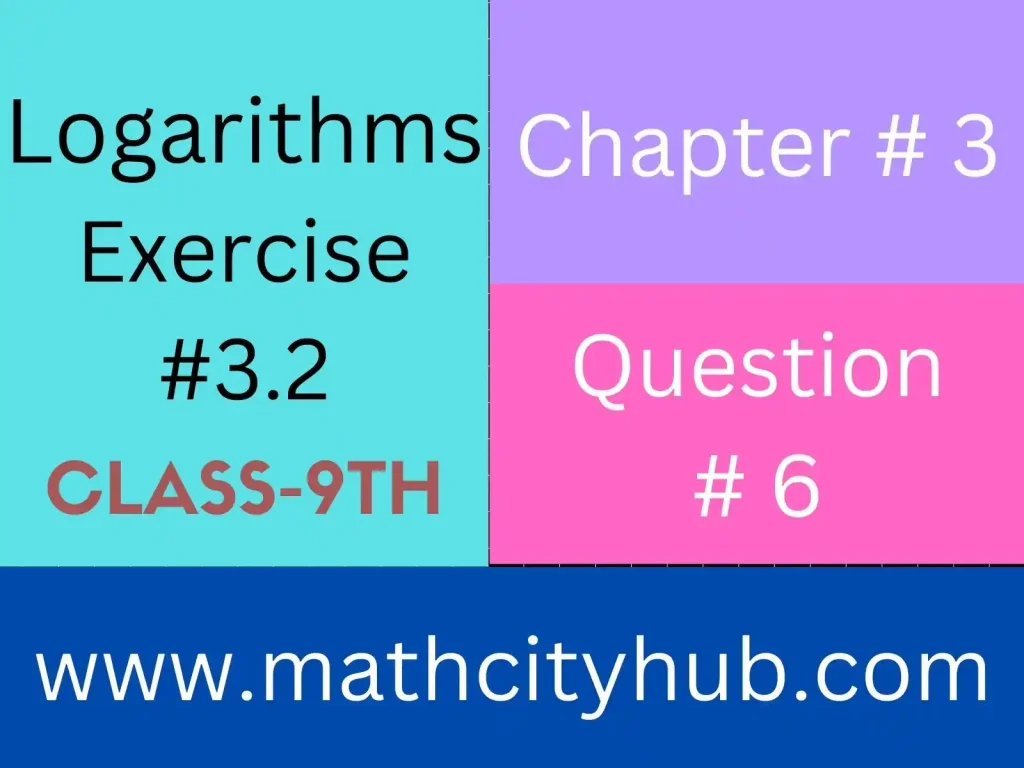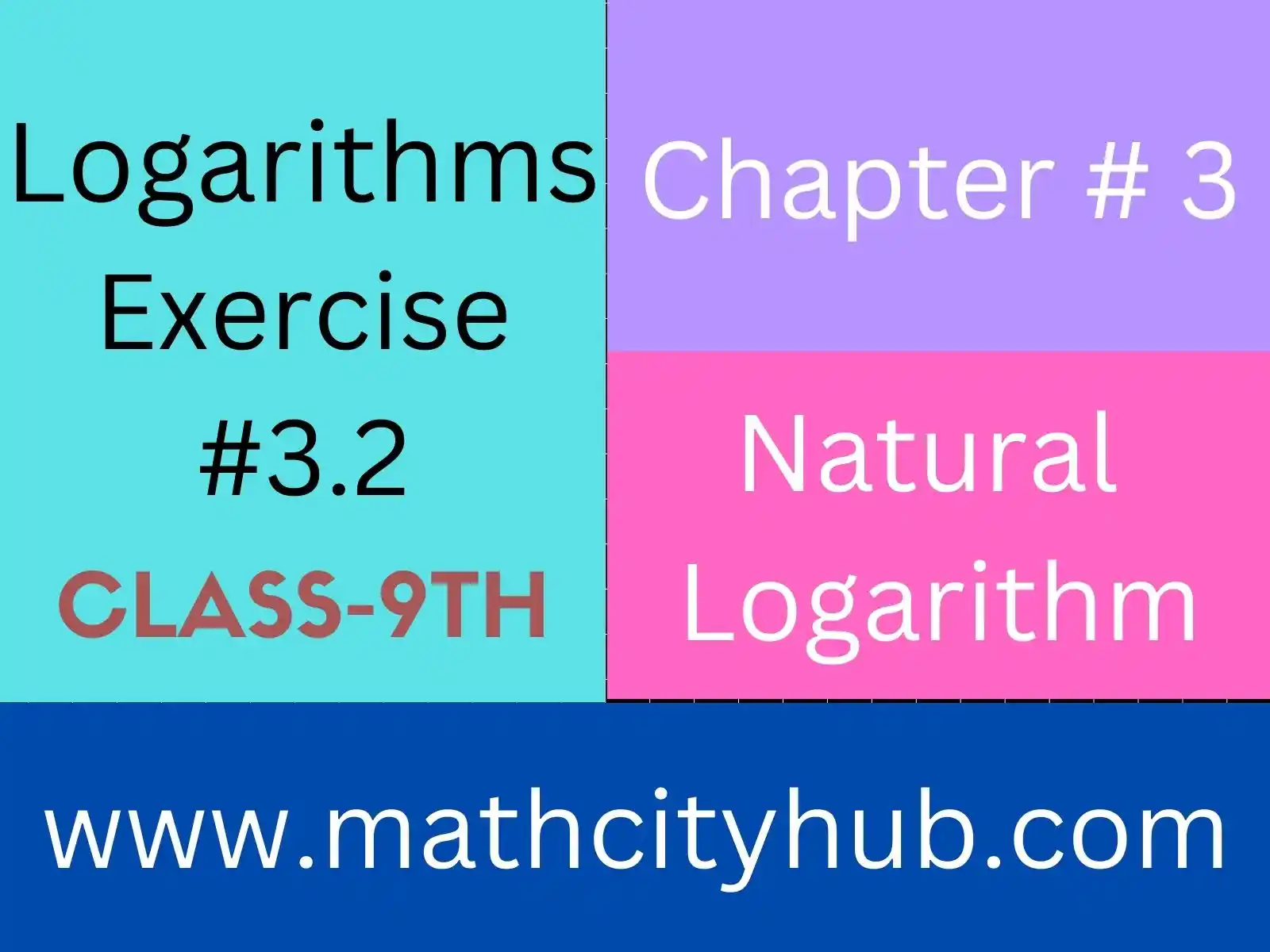Exercise.3.2: Common and Natural Logarithm: Imagine a world where calculations with massive numbers weren’t a tedious slog, but a dance of elegant shortcuts. A world where earthquakes were measured on a scale that captured their true might, and the acidity of solutions whispered their secrets through simple numbers.
This is the world ushered in by a fascinating mathematical concept called logarithms.
In essence, logarithms are the whisperers of exponents. They answer the question: “To what power must I raise a specific base (say, 10) to get another number?” Think of them as decoding the hidden exponents behind familiar equations.
For example, the statement “2 to the power of 3 equals 8” can be rewritten as “the logarithm of 8 to base 2 is 3,” or simply “log₂ 8 = 3.”
But why would we need such a seemingly convoluted concept? Well, the answer lies in the power of simplicity. Logarithms have an uncanny ability to transform complex operations into manageable arithmetic.
Just like logarithms tame exponents, they can turn multiplication into addition, division into subtraction, and even complex growth patterns into linear expressions.
This ability to compress complexity made logarithms the heroes of mathematics and science for centuries. From astronomers navigating the cosmos to chemists unraveling the secrets of molecules, logarithms fueled groundbreaking discoveries. Exercise.3.2: Common and Natural Logarithm:
Even today, their influence echoes in diverse fields like computer science, economics, and music theory.
But logarithms are not just dusty relics of the past. They remain a vital tool in the modern world, lending their power to various applications.
From deciphering the decibel scale of sound to analyzing seismic waves and understanding population growth, logarithms continue to whisper their insights behind the scenes.

Definition
A logarithm, in its simplest form, is the exponent to which you raise a base number to get another number. It’s like asking, “How many times do I multiply the base by itself to get the answer?”
Let’s break it down with some examples:
1. Common Logarithms:
Base 10: We often use 10 as the base, called common logarithms or Briggsian logarithms. Here, log10 100 = 2 because 10 raised to the power of 2 (10 x 10) equals 100.
Base 2: Computers love binary! So, log2 16 = 4 because 2 raised to the power of 4 (2 x 2 x 2 x 2) equals 16.
2. Natural Logarithms: Exercise.3.2: Common and Natural Logarithm:
Base e (2.71828…): This special base, denoted as e, leads to natural logarithms. ln 10 = 2.302585… because e raised to the power of 2.302585… (approximately) equals 10.
3. Beyond Numbers:

Logarithms aren’t just for real numbers! They can be used with other mathematical objects like:
Ratios: In earthquakes, the Richter scale uses logarithms to compare ground motion intensities. A magnitude 6 earthquake has 10 times the ground motion of a magnitude 5.
Concentrations: Chemists use pH, a logarithmic scale, to measure acidity/alkalinity. Every decrease in one pH unit signifies a tenfold increase in acidity.
Remember, the key to understanding logarithms is the exponent relationship:
Logarithm (log) of a number (x) to base (b) = exponent (y) such that b raised to the power of y equals x.
In a nutshell, logarithms are a powerful tool for simplifying complex calculations and revealing hidden patterns in various fields. As you explore further, you’ll find their applications reach far beyond just numbers!
Do you have any specific examples or applications of logarithms you’d like to discuss? I’m happy to explore them further with you! Exercise.3.2: Common and Natural Logarithm:

Questions & Answers
- Basic Concepts:
- What is a logarithm?
- A logarithm (log) is the exponent to which you raise a base number to get another number. It’s like asking, “How many times do I multiply the base by itself to get the answer?”
- 2. What are the different types of logarithms?
- Common Logarithms (log10): Use base 10 (e.g., log10 100 = 2).
- Natural Logarithms (ln): Use base e (2.71828…) (e.g., ln 10 = 2.302585…).
- General Logarithms (logb): Use any base b (positive and not 1) (e.g., log2 16 = 4).
- 3. What are the properties of logarithms?
- Logarithm of 1 to any base is 0.
- Logarithm of the base itself is 1.
- Product rule: log(a * b) = log(a) + log(b).
- Quotient rule: log(a / b) = log(a) – log(b).
- Power rule: log(a^n) = n * log(a).
- Applications:
- 4. How are logarithms used in real-world applications?
- Earthquakes: The Richter scale uses logarithms to compare earthquake magnitudes.
- Chemistry: pH scale uses logarithms to measure acidity/alkalinity.
- Computer Science: Used in data compression, cryptography, and algorithms.
- Biology: Logarithms model exponential growth patterns in populations.
- Music Theory: Helps understand musical intervals and scales.
- Problem-Solving: Exercise.3.2: Common and Natural Logarithm:
- 5. How do you solve logarithmic equations?
- Solving logarithmic equations usually involves isolating the logarithm and converting it to exponential form. You can use properties like product/quotient/power rules and common identities to simplify the equation.
- 6. How do you use logarithms to compare numbers?
- Larger logarithms signify bigger values on the base scale. Comparing logarithms can tell you which number is “bigger” compared to the base.
- 7. What are some common challenges when dealing with logarithms?
- Remembering the definition and properties.
- Understanding negative or fractional logarithms.
- Converting between different bases.
- Further Exploration:
- 8. What are some resources for learning more about logarithms?
- Online tutorials and textbooks. Exercise.3.2: Common and Natural Logarithm:
- Interactive websites and apps.
- Khan Academy, Math is Fun, Purplemath.
- Look for applications in specific fields like physics or finance.

Conclusion
In conclusion, logarithms stand as a testament to the beauty and utility of mathematics. From their humble beginnings as computational shortcuts to their diverse applications in science, technology, and beyond, they weave a thread of elegant simplicity through the complex tapestry of knowledge.
Logarithms offer us a lens through which to see the world afresh, where intricate relationships are revealed through concise expressions.
They empower us to navigate the vast realms of numbers, from the infinitesimal to the immeasurable, with a deftness that transcends brute calculation.
But their impact extends far beyond mere number crunching. Logarithms serve as a cornerstone of scientific understanding, unlocking secrets of nature from the rhythm of earthquakes to the delicate balance of chemical reactions.
They fuel the engines of modern technology, powering algorithms that shape our digital landscape and even allowing us to decipher the intricate language of music.
So, as we step forward in our journey of scientific and technological exploration, let us remember the power and grace of logarithms. Exercise.3.2: Common and Natural Logarithm:
They are not merely a tool, but a language, a way of thinking that allows us to comprehend the world with a deeper understanding and a brighter vision. For in the whispers of exponents, they unveil the hidden patterns and intricate dances that lie at the heart of all things.
Therefore, embrace the world of logarithms, for it is a world rich with insight, potential, and the sheer joy of intellectual discovery.
As you delve deeper into their mysteries, you might just find yourself unlocking not just numerical secrets, but the wonder and beauty that permeates the very fabric of existence.

Must Read:
Exercise.2.2: Properties of Real Numbers
Exercise.2.3: Radicals And Radicands
Exercise.2.4: Law of Exponents/ Indices
9th-Math-Ch-1-Review: Matrices And Determinants
Exercise.1.6: Solution Of Simultaneous Linear Equations
Exercise.1.5: Multiplicative Inverse a Of Matrices
Exercise.1.4: Multiplication Of Matrices
Exercise 1.3: Addition And Subtraction Of Matrices
Exercise.1.2. Types Of Matrices.
Exercise 1.1: Introduction to matrices
Math Full Book 9th Class
Exercise #3.2
Azam Bodla
M.Phil. Mathematics, Content Writer, SEO Expert
Web Developer, Online Tutor
Call or WhatsApp: +923059611600
Gmail:azambodlaa@gmail.com






